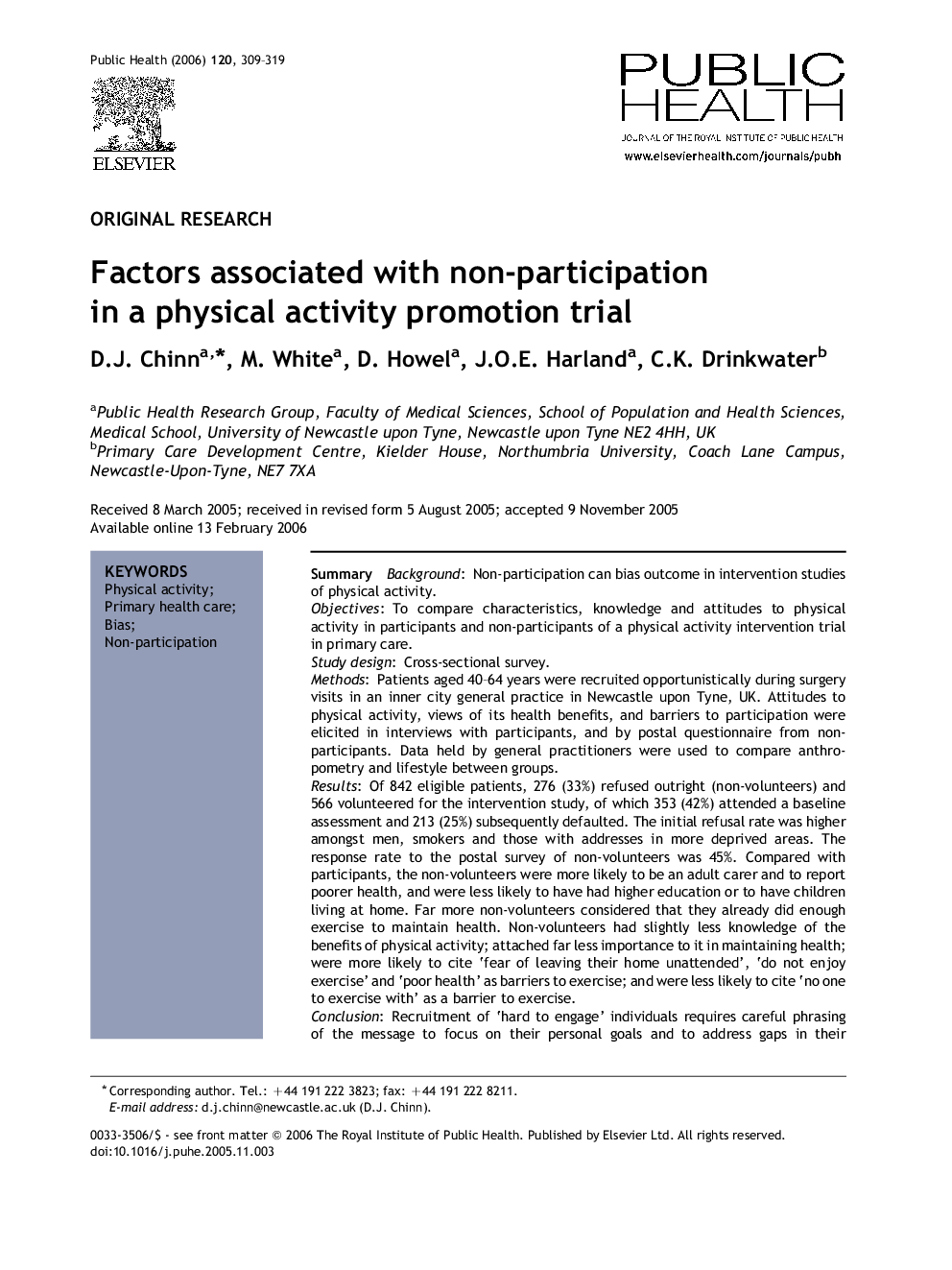| کد مقاله | کد نشریه | سال انتشار | مقاله انگلیسی | نسخه تمام متن |
|---|---|---|---|---|
| 1089182 | 951642 | 2006 | 11 صفحه PDF | دانلود رایگان |

SummaryBackgroundNon-participation can bias outcome in intervention studies of physical activity.ObjectivesTo compare characteristics, knowledge and attitudes to physical activity in participants and non-participants of a physical activity intervention trial in primary care.Study designCross-sectional survey.MethodsPatients aged 40–64 years were recruited opportunistically during surgery visits in an inner city general practice in Newcastle upon Tyne, UK. Attitudes to physical activity, views of its health benefits, and barriers to participation were elicited in interviews with participants, and by postal questionnaire from non-participants. Data held by general practitioners were used to compare anthropometry and lifestyle between groups.ResultsOf 842 eligible patients, 276 (33%) refused outright (non-volunteers) and 566 volunteered for the intervention study, of which 353 (42%) attended a baseline assessment and 213 (25%) subsequently defaulted. The initial refusal rate was higher amongst men, smokers and those with addresses in more deprived areas. The response rate to the postal survey of non-volunteers was 45%. Compared with participants, the non-volunteers were more likely to be an adult carer and to report poorer health, and were less likely to have had higher education or to have children living at home. Far more non-volunteers considered that they already did enough exercise to maintain health. Non-volunteers had slightly less knowledge of the benefits of physical activity; attached far less importance to it in maintaining health; were more likely to cite ‘fear of leaving their home unattended’, ‘do not enjoy exercise’ and ‘poor health’ as barriers to exercise; and were less likely to cite ‘no one to exercise with’ as a barrier to exercise.ConclusionRecruitment of ‘hard to engage’ individuals requires careful phrasing of the message to focus on their personal goals and to address gaps in their knowledge about physical activity and the principal barriers they perceive. Differential uptake across population subgroups could lead to a widening of health inequalities.
Journal: Public Health - Volume 120, Issue 4, April 2006, Pages 309–319